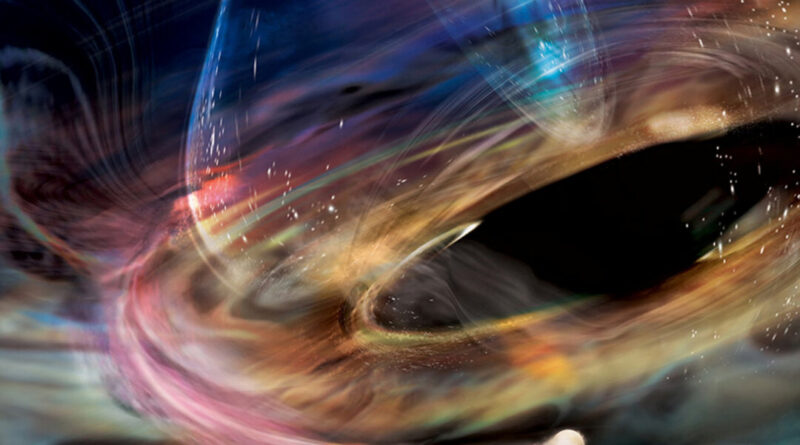Courageous White Dwarf Encounters Enormous Black Hole Up Close
WASHINGTON—Researchers have observed flashes of X-rays emanating from the nucleus of a galaxy close to our own Milky Way. These flashes are gradually increasing in frequency and appear to originate from a white dwarf—a dense stellar remnant—a star with a potential for destruction.
Utilizing the European Space Agency’s XMM-Newton orbiting X-ray telescope, scientists suggest that this white dwarf is nearing its critical limit, known as the event horizon, as it orbits the supermassive black hole at the galaxy’s center, the team reports.
“It is likely the nearest object we’ve ever seen orbiting a supermassive black hole. This is incredibly close to the black hole’s event horizon,” stated Megan Masterson, a doctoral student in physics at the Massachusetts Institute of Technology and lead author of the study presented at a meeting of the American Astronomical Society in Maryland this week, with plans for publication in the journal Nature.
Black holes are extremely dense objects with a gravitational pull so intense that not even light can escape. Although their powerful gravity typically attracts any nearby matter, such as stars, gas, and dust, researchers believe this white dwarf has stabilized its orbit around the black hole instead of spiraling in.
The galaxy in question lies approximately 270 million light-years from Earth. A light-year is the distance light covers in one year, roughly 5.9 trillion miles.
Most galaxies host a supermassive black hole at their centers. The black hole in the new observations, titled 1ES 1927+654, has a mass approximately one million times that of our sun. For comparison, the supermassive black hole at the center of the Milky Way, known as Sagittarius A*, is about four times more massive.
White dwarfs rank among the most compact objects in the universe, but they are less dense than black holes. Stars with masses up to eight times that of our sun generally conclude their life cycles as white dwarfs, having exhausted their hydrogen fuel. This process leads to gravitational collapse and the shedding of outer layers during a “red giant” phase, ultimately revealing a dense core about the size of Earth, which is the white dwarf.
This particular white dwarf is estimated to be about 10 percent the mass of the sun and is moving at nearly half the speed of light. It is navigating the high-energy region around the black hole, creating X-ray bursts as it orbits. Initially, the intervals between these bursts decreased from every 18 minutes to seven minutes over roughly two years, while the dwarf was pulled closer to the black hole, but eventually, its orbit stabilized.
Researchers estimate the white dwarf orbits the black hole at about 5 percent of the distance between Earth and the sun, or just under 5 million miles.
They speculate that its orbit is stabilizing because the white dwarf’s outer layers are being drawn toward the black hole, resulting in a reaction that prevents it from crossing the event horizon into oblivion. It is possible the white dwarf could survive this close encounter, the team noted.
Future observatories, such as NASA’s Laser Interferometer Space Antenna (LISA), designed to detect gravitational waves, may help confirm this object’s identity as a white dwarf.
“What intrigues me most about this finding is that it indicates objects can orbit extremely close to supermassive black holes, raising the prospect of detecting joint signals in both X-ray light and gravitational waves, particularly with LISA, which is slated to launch in 2035,” commented Erin Kara, an MIT astrophysicist and co-author of the study.





